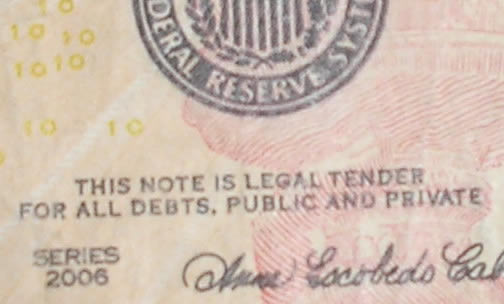Executive Order 6102
Franklin D Roosevelt signed bill that will lead to Gold Reserve Act 1934.
"
This Week in History:
June 5 - 11, 1933
FDR Signs the Gold Standard Act
June 2011
As the end of the emergency Congressional session, later to be known as the "Hundred Days," approached, President Franklin Delano Roosevelt was engaged in a virtual frenzy of activity, geared toward trying to put credit policy and economic policy on track for a sustained recovery. The Constitutional principle which the President was trying to ram through was clear: The general welfare of the U.S. population had to take priority in guiding the actions of the Federal government.
On June 5, the President took one of his most controversial actions in this direction, by signing the Gold Standard Act. This bill completed the process of freeing the U.S. government from an arbitrary, deflationary gold standard, by abrogating the "gold clause" in public and private contracts, and making legal tender acceptable in settlement of such contracts.
The significance of the series of actions which FDR had taken, which we will review in a minute, was succinctly summarized by author Arthur M. Schlesinger, Jr., in his The Coming of the New Deal. Schlesinger wrote this about the shift away from the gold standard:
"It meant that American monetary policy was no longer to be the quasi-automatic function of an international gold standard; that it was to become instead the instrument of conscious national purpose."
To put it in the language of today's analysis by Lyndon LaRouche: What Roosevelt did was to assert the sovereign right of the nation to control its own credit, rather than permit the "international marketplace" to determine what credit would be available. And he did it because the general welfare of the population depended upon it.
Gold Standard vs. Gold Reserve
Before we get further into our story, it's important to distinguish between two ways of looking at the gold standard: The "British" gold standard, whereby every piece of currency is convertible, vs. the gold-reserve standard, which permits gold to be used as a standard for international valuation, but at a ratio to the currency emitted. In the first, gold basically limits the credit which can be issued, and keeps control in the hands of those with "hard" currency. In the second, gold works as a stabilizer for settling accounts, but the fundamental reality of the fact that it is
production, not precious metal, which comprises wealth, is made clear.
What FDR did with his moves on gold, which were followed up in international conferences, up to the Bretton Woods Conference itself, was to move the U.S. from the gold standard—which had been imposed with Specie Resumption back in the 1870s, as a reaction against U.S. sovereign control of currency through the greenbacks—to the gold-reserve standard."
With inflation on the rise and a gold run looming, President Richard Nixon's team enacted a plan that ended dollar convertibility to gold and implemented wage and price controls, which soon brought an end to the Bretton Woods System.
www.federalreservehistory.org



